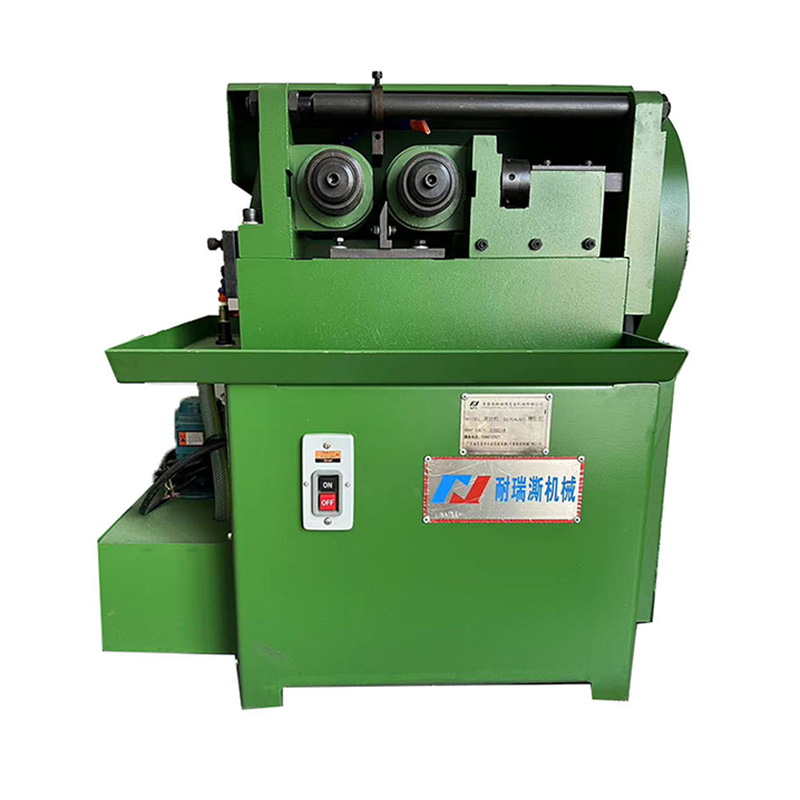Ensuring Safety: Operating a Small Rebar Thread Rolling Machine
2024-04-16
Small Rebar Thread Rolling Machines are powerful tools used in the construction and metalworking industries to create precise threaded patterns on rebars. While these machines offer efficiency and precision, it's essential to prioritize safety when operating them. Implementing proper safety precautions not only protects operators from potential hazards but also ensures smooth and trouble-free operation of the machine. Let's explore the key safety precautions that should be followed when operating a Small Rebar Thread Rolling Machine.
1. Training and Education
Before operating a Small Rebar Thread Rolling Machine, all operators should receive comprehensive training and education on its safe use and operation. Training should cover topics such as machine setup, threading procedures, emergency procedures, and safety precautions. Operators should be familiar with the machine's controls, functions, and potential hazards to mitigate risks effectively.
2. Wear Personal Protective Equipment (PPE)
Operators should wear appropriate personal protective equipment (PPE) to safeguard themselves from potential hazards. This may include safety glasses or goggles to protect against flying debris, gloves to prevent injuries from sharp edges or moving parts, and ear protection to reduce noise exposure. Additionally, wearing proper clothing, such as long sleeves and pants, can provide added protection against cuts or abrasions.
3. Machine Inspection and Maintenance
Before operating a Small Rebar Thread Rolling Machine, conduct a thorough inspection to ensure that all components are in good working condition. Check for any signs of damage, wear, or malfunction, and address any issues promptly. Regular maintenance, such as lubrication and cleaning, should be performed according to the manufacturer's recommendations to keep the machine operating safely and efficiently.
4. Secure Work Area
Maintain a clean and organized work area around the Small Rebar Thread Rolling Machine to minimize trip hazards and ensure safe operation. Remove any obstructions, debris, or clutter from the vicinity of the machine, and ensure adequate lighting for visibility. Keep emergency exits and pathways clear at all times to facilitate swift evacuation in case of an emergency.
5. Follow Operating Procedures
Adhere to the manufacturer's operating procedures and guidelines when using the Small Rebar Thread Rolling Machine. Familiarize yourself with the machine's controls, settings, and safety features, and follow proper startup and shutdown procedures. Avoid bypassing or modifying safety mechanisms, and never operate the machine if you are unsure of how to do so safely.
6. Use Machine Guards and Safety Devices
Ensure that all machine guards and safety devices are in place and functioning correctly before operating the Small Rebar Thread Rolling Machine. Machine guards protect operators from moving parts, rotating shafts, and other hazards, while safety devices, such as emergency stop buttons and interlocks, provide quick means of halting operation in case of an emergency.
7. Monitor Operation
Stay vigilant and attentive while operating the Small Rebar Thread Rolling Machine, and monitor its performance closely. Watch for any signs of abnormal noise, vibration, or behavior that may indicate a problem. If you encounter any issues or concerns during operation, stop the machine immediately and address the issue before resuming work.
8. Emergency Procedures
Be familiar with the emergency procedures for the Small Rebar Thread Rolling Machine and ensure that all operators know how to respond to emergencies effectively. Know the location of emergency stop buttons, fire extinguishers, first aid kits, and other safety equipment, and ensure that they are readily accessible. In the event of an emergency, follow established protocols for evacuating the area and seeking assistance.
Conclusion
In conclusion, safety should be paramount when operating a Small Rebar Thread Rolling Machine. By following proper safety precautions, including training and education, wearing PPE, conducting machine inspections, maintaining a secure work area, following operating procedures, using machine guards and safety devices, monitoring operation, and knowing emergency procedures, operators can minimize risks and ensure a safe and productive work environment. Prioritizing safety not only protects operators from harm but also contributes to the efficient and reliable operation of the machine, ultimately enhancing overall workplace safety and productivity.



